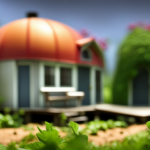Beginners Guides
How Does A Tiny House Help The Environment

Welcome to the tiny house movement – a trend that’s reshaping our living habits and making a positive impact on our planet! This article will delve into how tiny homes present an effective answer to environmental issues.
Tiny houses, with their tiny footprint, offer tremendous benefits that go beyond their compact size. Through energy efficiency, reduced carbon emissions, minimal resource consumption, and sustainable living practices, these pint-sized abodes play a significant role in preserving our planet for future generations.
By embracing a minimalist lifestyle, tiny house dwellers are able to reduce their carbon footprint and live more sustainably. The compact size of these homes encourages energy efficiency, as they require less energy for heating, cooling, and lighting. With fewer square feet to heat or cool, tiny house owners can significantly reduce their energy consumption and the associated carbon emissions.
Moreover, the construction of tiny houses often involves the use of recycled and repurposed materials, further minimizing resource consumption. Additionally, their eco-friendly design incorporates features like rainwater collection systems and solar panels, allowing homeowners to harness renewable energy sources.
Join us as we delve deeper into the many ways a tiny house can help protect our environment, and discover how these small dwellings can make a big difference in our quest for a sustainable future.
Key Takeaways
- Tiny houses promote energy efficiency and reduce energy consumption through their compact size and excellent insulation.
- Many tiny houses use recycled and repurposed materials, minimizing resource consumption and waste management.
- Tiny houses often incorporate sustainable features like rainwater collection systems and solar panels, reducing reliance on fossil fuels.
- Living in a tiny house encourages a simpler lifestyle and reduces excessive consumption, leading to a lower environmental impact.
Energy Efficiency
Living in a tiny house allows for greater energy efficiency, making it easier to reduce your carbon footprint and save money on utility bills. These small dwellings are designed with energy-saving features that maximize the use of natural resources.
For example, many tiny houses are equipped with solar panels, allowing residents to generate their own electricity from renewable sources. These panels can power the entire house, including appliances and heating systems. Additionally, tiny houses often have excellent insulation, reducing the need for artificial heating and cooling. The compact size of these homes also minimizes energy loss, as there are fewer areas for air leakage.
Furthermore, many tiny houses are built with energy-efficient appliances and fixtures, such as LED lighting and low-flow faucets, further reducing energy consumption. By integrating renewable energy and implementing energy-saving features, tiny houses significantly decrease the amount of energy required to power a home. This not only benefits the environment by reducing carbon emissions, but it also helps homeowners save money on their utility bills.
With reduced energy consumption and a smaller carbon footprint, living in a tiny house is a sustainable choice for a greener future.
Reduced Carbon Emissions
By opting for a tiny home, individuals significantly cut down on their carbon footprint, making a positive impact on the planet. Tiny houses are known for their energy efficiency, but they also contribute to reduced carbon emissions in other ways.
One of the key factors is the use of renewable energy sources. Many tiny homes are equipped with solar panels, allowing residents to generate their own clean and sustainable energy. By harnessing the power of the sun, homeowners can reduce their reliance on fossil fuels and minimize their carbon emissions.
In addition to renewable energy sources, tiny homes promote transportation alternatives. With limited space, tiny house owners often choose to live in communities that are walkable or bike-friendly. This encourages residents to rely less on cars, which are a major source of carbon emissions. By utilizing public transportation or opting for eco-friendly modes of transportation such as biking or walking, tiny house dwellers further reduce their carbon footprint.
By reducing carbon emissions through the use of renewable energy sources and transportation alternatives, tiny homes play a significant role in mitigating climate change.
In the next section, we will explore how these homes also contribute to minimal resource consumption without compromising on comfort or functionality.
Minimal Resource Consumption
With their eco-friendly features, tiny homes shine as beacons of sustainability, offering a glimpse into a world where we can embrace comfort and functionality while treading lightly on our planet. One of the key benefits of tiny houses is their minimal resource consumption.
Due to their small size, these homes require fewer materials to build and maintain, resulting in significant cost savings and reduced environmental impact.
Tiny houses have a small footprint, both in terms of physical space and resource usage. They typically range from 100 to 400 square feet, compared to the average American home size of around 2,600 square feet. This compactness not only reduces the amount of land required for construction but also minimizes the need for heating, cooling, and lighting. With less space to heat or cool, tiny homes consume less energy, resulting in lower utility bills and a smaller carbon footprint.
Additionally, the limited square footage of tiny houses promotes a simpler lifestyle, encouraging individuals to prioritize their needs over excessive consumption. This shift towards a more minimalist approach not only reduces resource consumption but also promotes a sense of mindfulness and contentment. By living in smaller spaces, we can reduce our ecological impact and create a more sustainable future.
With minimal resource consumption and cost savings, tiny houses offer a compelling solution to reducing our environmental impact. Transitioning to smaller, more efficient living spaces is a crucial step towards creating a sustainable and eco-friendly society.
Lower Environmental Impact
Embrace the eco-friendly lifestyle of a tiny home and witness a remarkable reduction in your environmental footprint. One of the key benefits of living in a tiny house is the significantly lower environmental impact it has compared to traditional homes.
Tiny houses require fewer resources to build, resulting in reduced waste management throughout the construction process. With the smaller size, fewer raw materials are needed, reducing the strain on natural resources. Additionally, the compact design encourages efficient use of energy and water, further minimizing the environmental impact.
In terms of waste management, tiny houses promote a more sustainable approach. With limited space, individuals are encouraged to adopt a minimalist lifestyle, reducing the accumulation of unnecessary possessions. This mindset extends to waste as well, as individuals become more conscious of their consumption habits and strive to minimize waste generation. Recycling and composting are also commonly practiced in tiny house communities, further reducing the need for landfill space.
Transitioning into the subsequent section about sustainable living practices, it is clear that tiny houses provide a solid foundation for embracing a more eco-friendly lifestyle. By reducing waste management and encouraging resource conservation, tiny houses pave the way for sustainable living practices that benefit both individuals and the environment.
Sustainable Living Practices
Living sustainably means making choices that support the well-being of our planet and future generations, and what better way to do that than by hopping on the tiny home bandwagon? One of the key aspects of sustainable living in a tiny house is effective waste management. With limited space, tiny homeowners are forced to be mindful of their waste production. They often adopt practices like composting and recycling to minimize their environmental impact. Additionally, many tiny homes are equipped with innovative waste management systems, such as composting toilets, to further reduce water consumption and waste production.
Another important aspect of sustainable living in a tiny house is the use of renewable energy sources. Many tiny homeowners opt for solar panels to power their homes, reducing their reliance on fossil fuels. These solar panels can generate enough energy to meet the needs of the household, while also reducing carbon emissions. Some tiny homes even have the ability to generate more energy than they consume, allowing homeowners to sell excess energy back to the grid.
By incorporating waste management practices and renewable energy sources, tiny homes are taking significant steps towards sustainable living. In the next section, we’ll explore how these eco-friendly practices are further enhanced through thoughtful design choices.
Eco-Friendly Design
Make the conscious choice to design your tiny home with eco-friendly features that not only benefit the planet but also create a harmonious and sustainable living space for you. Incorporating green materials and passive heating techniques can greatly contribute to the overall environmental impact of your tiny house.
-
Use green materials: Opt for sustainable materials like bamboo or reclaimed wood for your flooring, walls, and furniture. These materials are renewable and have a lower carbon footprint compared to traditional options. Additionally, consider using low VOC paints and finishes to minimize indoor air pollution.
-
Passive heating: Maximize natural heat sources by strategically placing windows to allow for ample sunlight. This will not only provide warmth during colder months but also reduce the need for artificial heating. Additionally, consider installing insulation and weatherstripping to prevent heat loss and increase energy efficiency.
-
Energy-efficient appliances: Invest in energy-efficient appliances such as solar-powered water heaters, LED lighting, and low-flow fixtures. These appliances consume less energy, reducing both your environmental impact and utility bills.
By incorporating these eco-friendly design elements into your tiny house, you can create a space that promotes sustainable living while minimizing your carbon footprint.
Frequently Asked Questions
Are tiny houses suitable for all climates and weather conditions?
Tiny houses can be suitable for all climates and weather conditions with the right insulation and durability measures. Proper insulation helps regulate the interior temperature, keeping the house warm in colder climates and cool in hotter climates. Additionally, durable construction materials and techniques ensure that tiny houses can withstand severe weather conditions such as strong winds and heavy rain.
Overall, with proper insulation and durability, tiny houses can provide comfortable living spaces in any climate or weather.
How do tiny houses handle waste management, such as sewage and garbage?
In terms of waste management, tiny houses have various options for sewage treatment and waste disposal. They can utilize composting toilets, which convert human waste into compost that can be used as fertilizer.
Additionally, some tiny houses may connect to municipal sewage systems or use septic tanks for proper sewage treatment.
For garbage disposal, tiny house owners can minimize waste by practicing recycling, composting, and reducing consumption.
Overall, these waste management practices in tiny houses promote sustainability and environmental responsibility.
Can tiny houses be connected to renewable energy sources like solar panels or wind turbines?
Renewable energy integration is a key aspect of off-grid living in tiny houses. According to a study by the U.S. Department of Energy, 64% of tiny house owners use solar panels as their primary energy source. This statistic highlights the growing trend of incorporating renewable energy into tiny house design. By harnessing the power of solar panels or wind turbines, tiny house owners can reduce their reliance on fossil fuels and minimize their environmental impact.
This sustainable approach aligns perfectly with the environmentally-friendly ethos of tiny house living.
What are the zoning and legal regulations surrounding owning and living in a tiny house?
Zoning regulations and legal restrictions play a crucial role in owning and living in a tiny house. These regulations vary from place to place, so it’s important to research and comply with local laws.
Zoning regulations dictate where tiny houses can be located, such as on private property or in designated communities.
Legal restrictions may include minimum square footage requirements, permits, and inspections.
Understanding and adhering to these regulations ensures a smooth and legal experience with tiny house living.
How do tiny houses contribute to community building and social sustainability?
Tiny houses contribute to community building and social sustainability through community engagement and social integration. These small homes encourage a sense of togetherness and shared spaces, fostering a strong sense of community. Residents often participate in community activities, such as gardening or shared meals, promoting social interaction and connection.
Additionally, tiny houses can be built in existing communities, revitalizing underutilized areas and promoting sustainable urban development. Overall, tiny houses offer a solution for creating inclusive and connected communities.
Conclusion
In conclusion, living in a tiny house offers numerous environmental benefits. By embracing energy-efficient technologies and sustainable living practices, such as composting toilets and rainwater harvesting, tiny house dwellers significantly reduce their carbon footprint.
Moreover, the minimal resource consumption and eco-friendly design of these homes further contribute to a lower environmental impact. It’s like a drop of water creating ripples of positive change, as tiny houses exemplify a solution-oriented approach towards a greener future.
Hi, I’m Emma. I’m the Editor in Chief of Tiny House 43, a blog all about tiny houses. While tree houses are often associated with childhood, they can be the perfect adult retreat. They offer a cozy space to relax and unwind, surrounded by nature. And since they’re typically built on stilts or raised platforms, they offer stunning views that traditional homes simply can’t match. If you’re looking for a unique and romantic getaway, a tree house tiny house might just be the perfect option.
Beginners Guides
How Do I Get Rid of Tiny Flies in My House
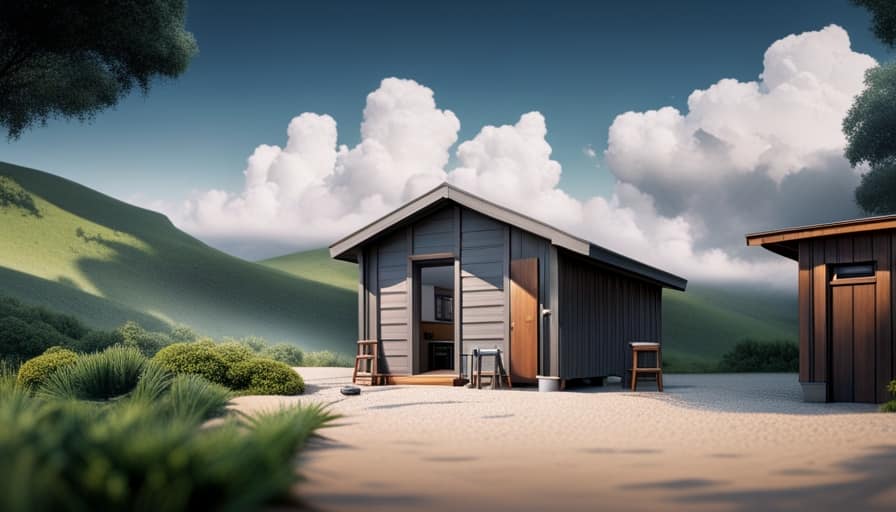
Recently, I have been bothered by these annoying little flies in my home, and I must say, they are really starting to get on my nerves!
But fear not, because I’ve done my research and I’m here to share some expert tips on how to get rid of those tiny flies once and for all.
From identifying the different types of flies to using natural remedies and chemical solutions, I’ve got you covered.
So let’s dive in and bid farewell to these unwanted guests together!
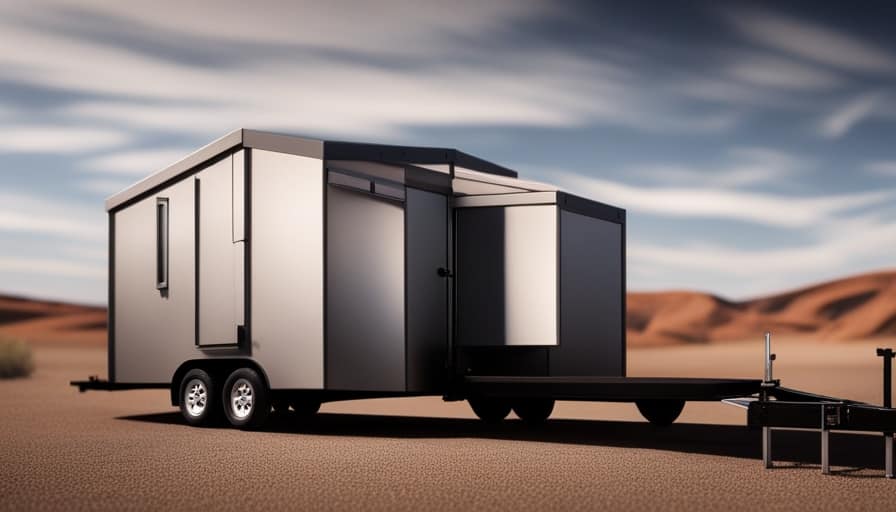
Key Takeaways
- Identifying the common types of tiny flies in your house is important for effective pest control.
- Tiny flies are attracted to moist and decaying organic matter, such as overripe fruits and rotting vegetables.
- Natural remedies, such as vinegar and dish soap solutions, can be used to eliminate tiny flies from your house.
- Preventing future infestations of tiny flies involves maintaining a clean environment, sealing cracks or openings, and storing perishable items properly.
Identifying the Common Types of Tiny Flies in Your House
I can easily identify the common types of tiny flies in my house by observing their physical characteristics and behavior. Flies are attracted to our homes for various reasons, including the presence of food, moisture, and waste. It’s important to note that these flies can pose health risks, as they can carry and spread disease-causing organisms.
To identify the types of flies, I first look at their size and color. For instance, fruit flies are small and have a tan or brown color. Drain flies, on the other hand, are gray or black and have a fuzzy appearance.
Understanding the Reasons Why Tiny Flies Infest Your Home
To understand why tiny flies infest your home, it’s important to consider their attraction to certain conditions and factors within your living space.
These flies, commonly known as fruit flies or drain flies, are attracted to moist and decaying organic matter. They seek out common breeding grounds such as overripe fruits, rotting vegetables, and damp areas in your kitchen or bathroom.

These tiny flies are also drawn to standing water in sinks, drains, and garbage disposals. Signs of a fly infestation include the presence of numerous flies hovering around these areas, as well as the sighting of their larvae or pupae.
It’s crucial to address these conditions and remove any potential breeding grounds to effectively eliminate the infestation and prevent future occurrences.
Natural Remedies to Eliminate Tiny Flies From Your House
One effective way to eliminate tiny flies from your house is by using a combination of vinegar and dish soap. This homemade vinegar fly spray is a non-toxic and practical solution to get rid of those pesky insects.
Here’s how you can make it:

- Mix equal parts of vinegar and water in a spray bottle.
- Add a few drops of dish soap to the mixture. The soap helps to break the surface tension of the liquid, making it easier for the flies to drown.
- Shake the bottle gently to ensure the ingredients are well combined.
- Spray the solution directly onto the flies or in areas where they’re commonly found, such as near windows or fruit bowls.
This natural fly spray isn’t only effective but also safe for your family and pets. It traps and kills the flies without the use of harmful chemicals.
Give it a try and say goodbye to those tiny flies in your house!
Using Chemical Solutions to Get Rid of Tiny Flies in Your Home
Bleach is a strong and effective chemical solution that can help eliminate tiny flies in your home. Chemical solutions, such as bleach, can be highly effective in eliminating tiny flies. The strong properties of bleach make it a powerful tool for killing flies and destroying their breeding grounds. However, it’s important to use caution when using chemical solutions, as they can be harmful to humans and pets if not used properly.
When comparing chemical solutions to natural remedies for getting rid of tiny flies in your house, it’s important to consider their effectiveness.
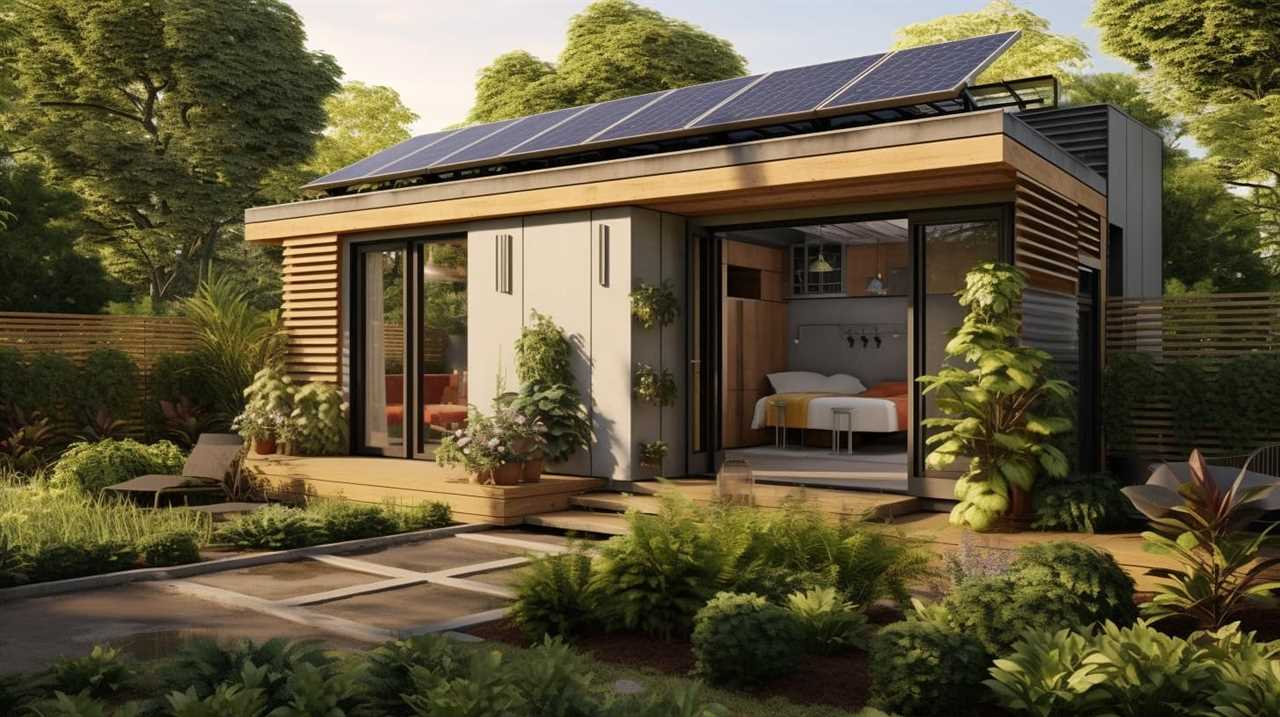
In the next section, we’ll discuss methods for preventing future infestations of tiny flies in your house.
Preventing Future Infestations of Tiny Flies in Your House
I can take steps to prevent future infestations of tiny flies in my house by implementing proper sanitation practices. By maintaining a clean environment, I can greatly reduce the chances of reinfestation. Here are three key practices to incorporate:
-
Regularly clean and sanitize all areas of the house, especially the kitchen and garbage disposal areas. Empty and clean trash cans frequently to prevent any organic matter from attracting flies.
-
Seal any cracks or openings in doors, windows, and screens to prevent flies from entering the house. Repair any damaged screens to ensure they’re intact and functioning properly.
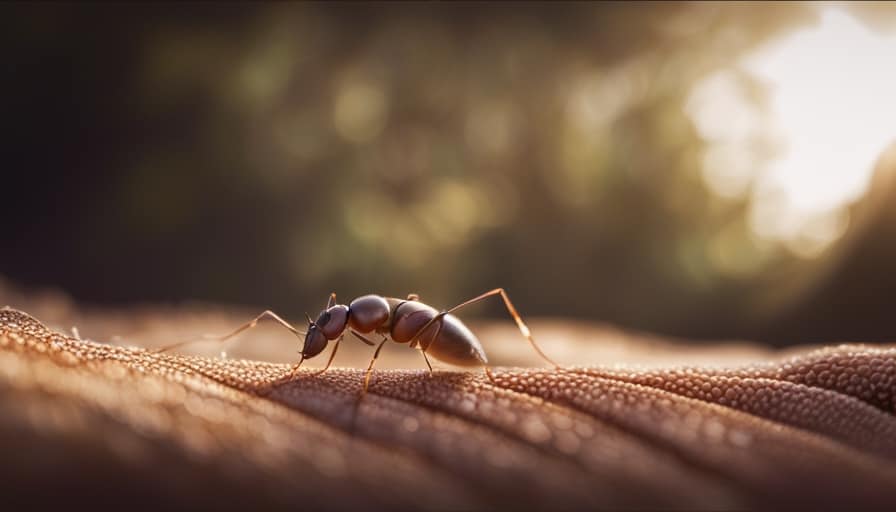
-
Store fruits, vegetables, and other perishable items in sealed containers or in the refrigerator. Flies are attracted to the odors of decaying food, so keeping it properly stored will deter them.
Frequently Asked Questions
How Do Tiny Flies Affect My Health?
Tiny flies can pose health risks, as they can carry bacteria and pathogens that can cause illnesses. To avoid health issues, it’s important to keep your house clean, dispose of trash properly, and eliminate any standing water where they can breed.
Can Tiny Flies Damage My Property?
Tiny flies can indeed cause damage to your property. Their larvae can infest and feed on organic materials, such as wood, causing structural damage over time. It’s important to address the issue promptly to prevent further harm.
Are Tiny Flies Attracted to Specific Food Sources?
Tiny flies are often attracted to specific food sources, such as overripe fruits or decaying organic matter. Understanding their breeding habits and implementing effective prevention methods, like proper sanitation and sealing entry points, can help keep them out of the house.
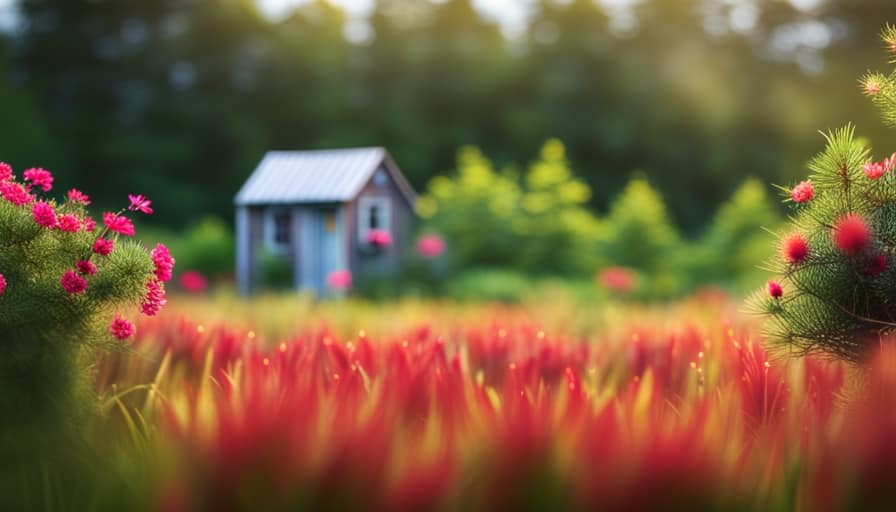
How Long Does It Take for Natural Remedies to Eliminate Tiny Flies?
In my experience, the speed of effectiveness of natural remedies versus chemical solutions for eliminating tiny flies can vary. While some natural remedies may work quickly, others may take longer to fully eliminate the flies. It’s important to be patient and consistent in your efforts.
Are There Any Long-Term Effects of Using Chemical Solutions to Get Rid of Tiny Flies?
Using chemical solutions to eliminate tiny flies in your house can have long-term environmental impacts. Consider using alternative methods like natural remedies or traps that are safer and more sustainable for the ecosystem.
Conclusion
In conclusion, it’s evident that tiny flies can be a nuisance in our homes. By understanding their types and reasons for infestation, we can effectively eliminate them using natural remedies or chemical solutions.
However, it’s crucial to prevent future infestations by maintaining cleanliness and proper waste management. Rest assured, with the right knowledge and approach, you can bid farewell to these pesky insects and enjoy a fly-free home environment.
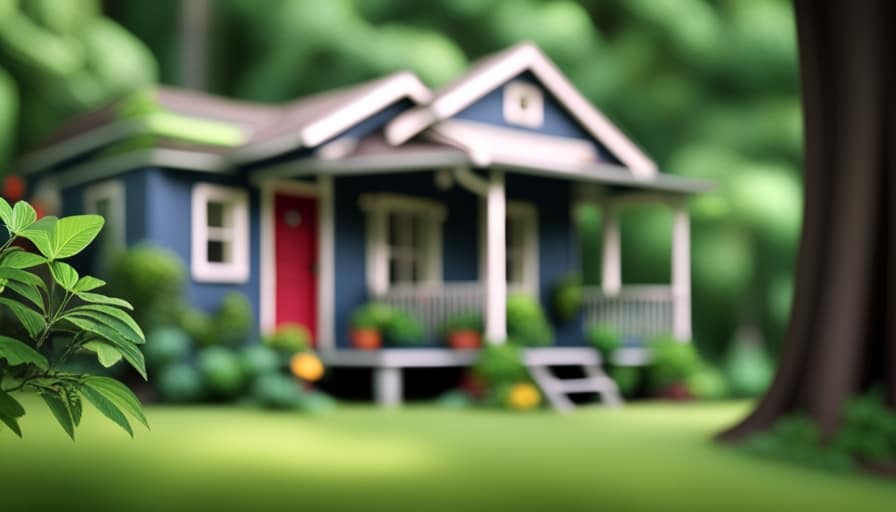
I’m Theodore, and I love tiny houses. In fact, I’m the author of Tiny House 43, a book about tiny houses that are also tree houses. I think they’re magical places where imaginations can run wild and adventures are just waiting to happen.
While tree houses are often associated with childhood, they can be the perfect adult retreat. They offer a cozy space to relax and unwind, surrounded by nature. And since they’re typically built on stilts or raised platforms, they offer stunning views that traditional homes simply can’t match.
If you’re looking for a unique and romantic getaway, a tree house tiny house might just be the perfect option.
Beginners Guides
How Do I Get Rid of Tiny Ants in My House

- Health risks: Are there any potential diseases that can be transmitted by ants in the house?
- Prevention methods: What are some effective ways to keep ants out of the house to avoid any health risks?
I have been dealing with these stubborn small ants in my home, and I’m sure you can empathize. It seems like I am stuck in an endless game of hide-and-seek with these little creatures.
But fear not, because I’ve done my research and I’m here to share some tried and true methods to get rid of them for good. From natural remedies to chemical solutions, I’ve got you covered.
So let’s roll up our sleeves and say goodbye to those pesky ants together!
Key Takeaways
- Identifying the type of ants in your house is important in order to effectively address the infestation issue.
- Understanding the behavior and nesting habits of tiny ants is essential in finding and eliminating their colonies.
- Natural remedies such as vinegar and water solution, essential oils, and cinnamon can help repel and eliminate tiny ants.
- If natural remedies don’t work, consider using chemical solutions or seeking professional pest control services for a safer and more comprehensive approach.
Identifying the Type of Ants in Your House
I personally find it helpful to identify the type of ants in my house by observing their behavior and physical features. Distinguishing characteristics play a crucial role in determining the species of ants present.

Some common types of household ants include pavement ants, odorous house ants, and pharaoh ants. Pavement ants are dark brown or black with parallel grooves on their heads and thoraxes. Odorous house ants emit a distinct odor when crushed, often described as a rotten coconut smell. Pharaoh ants are light yellow to reddish-brown and have two distinct nodes on their petioles.
In terms of common habitats, ants can be found in various areas of the house, including kitchens, bathrooms, and around food sources. Understanding the behavior and nesting habits of tiny ants is essential in effectively addressing the infestation issue.
Understanding the Behavior and Nesting Habits of Tiny Ants
There are several key factors to consider when understanding the behavior and nesting habits of tiny ants in your house.
These tiny creatures are social insects, living in colonies that can range from a few dozen to thousands of individuals. They communicate and cooperate through chemical signals and pheromones, which helps them locate food sources and establish trails.

When it comes to nesting, tiny ants can build their colonies in various locations, such as in wall voids, under floors, or even in potted plants. Understanding their nesting habits is crucial in effectively eliminating them from your house.
It’s important to note that while ants can be a nuisance indoors, they play a vital role in the ecosystem, helping to decompose organic matter and control other insect populations. However, their presence in food storage areas can contaminate and spoil food, making it necessary to address their infestation promptly and safely.
Natural Remedies to Get Rid of Tiny Ants in Your House
One effective natural remedy to eliminate tiny ants in your house is using a vinegar and water solution. Vinegar, with its strong odor, disrupts their scent trails and confuses them, making it difficult for them to navigate. To create the solution, mix equal parts of white vinegar and water in a spray bottle. Then, simply spray the solution directly onto the ants or their entry points.
Another natural remedy is using essential oils, such as peppermint, lemon, or tea tree oil. These oils have strong scents that repel ants. Mix a few drops of your chosen essential oil with water and spray it in areas where ants are present.
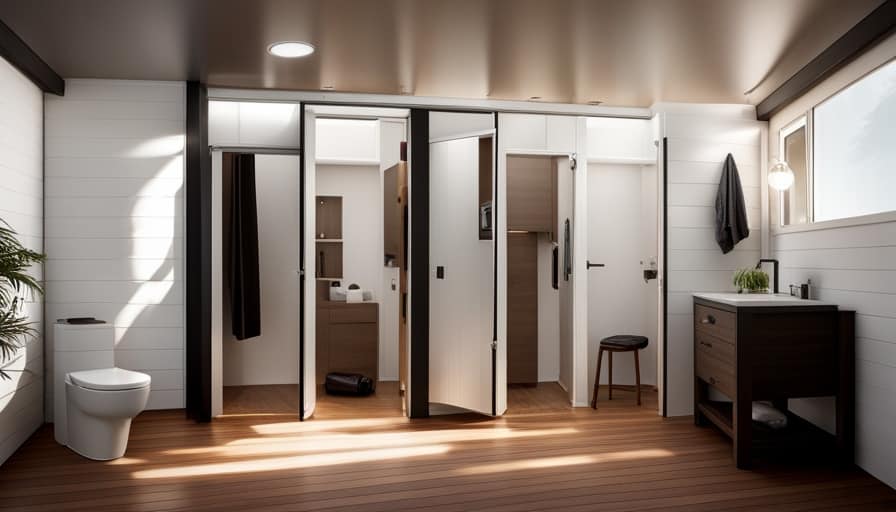
These natural remedies provide an eco-friendly and safe way to get rid of tiny ants in your house. However, if these methods don’t work, it may be necessary to consider chemical solutions for eliminating tiny ants.
Chemical Solutions for Eliminating Tiny Ants
If you’re dealing with a persistent infestation of tiny ants in your house, using insecticide sprays can be an effective solution to eliminate them. However, it is important to consider non-toxic alternatives and professional pest control services for a safer and more comprehensive approach.
| Chemical Solution | How it Works | Pros | Cons |
|---|---|---|---|
| Insecticide sprays | Kills ants on contact | – Easy to use – Widely available – Immediate results |
– Chemical exposure – Harmful to pets and children – Potential environmental impact |
While insecticide sprays can quickly kill ants, they may pose risks to your health and the environment. If you prefer non-toxic alternatives, consider using natural repellents like vinegar, lemon juice, or essential oils. These substances are less harmful and can help deter ants from entering your home.
Another option is to hire professional pest control services. They have the expertise and specialized equipment to effectively eliminate ant infestations. Professionals can also assess the extent of the problem and provide long-term solutions to prevent future infestations.
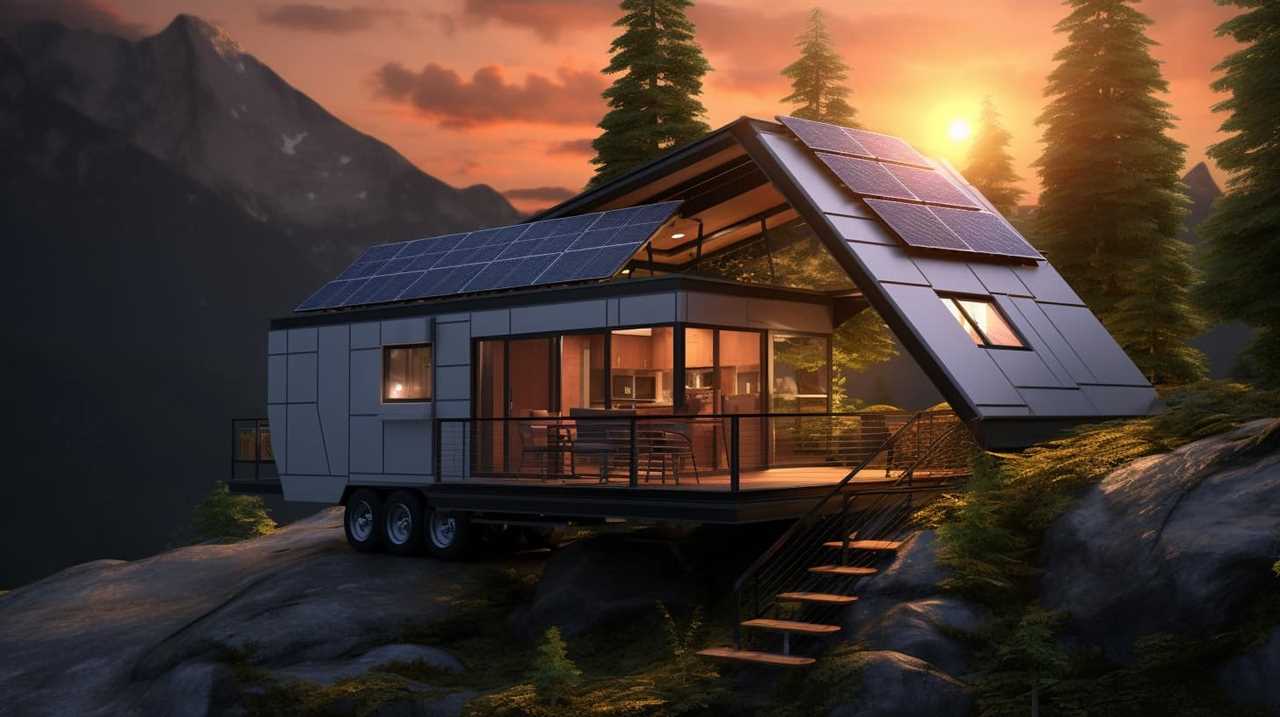
Preventing Future Infestations: Tips and Tricks
When I encountered a persistent infestation of tiny ants in my house, I took proactive steps to prevent future infestations. Here are some effective ant proofing techniques for your home and long-term strategies for keeping ants out:
-
Seal cracks and crevices: Inspect your house for any openings where ants can enter, such as gaps around doors, windows, and pipes. Use caulk or weatherstripping to seal these entry points.
-
Keep your house clean: Clean up food and drink spills promptly, and store food in airtight containers. Wipe down countertops and sweep floors regularly to remove any crumbs or residue that may attract ants.
-
Remove potential ant habitats: Trim back vegetation that’s in contact with your house, as ants can use it as a bridge to enter. Also, keep firewood and other outdoor items away from the foundation.
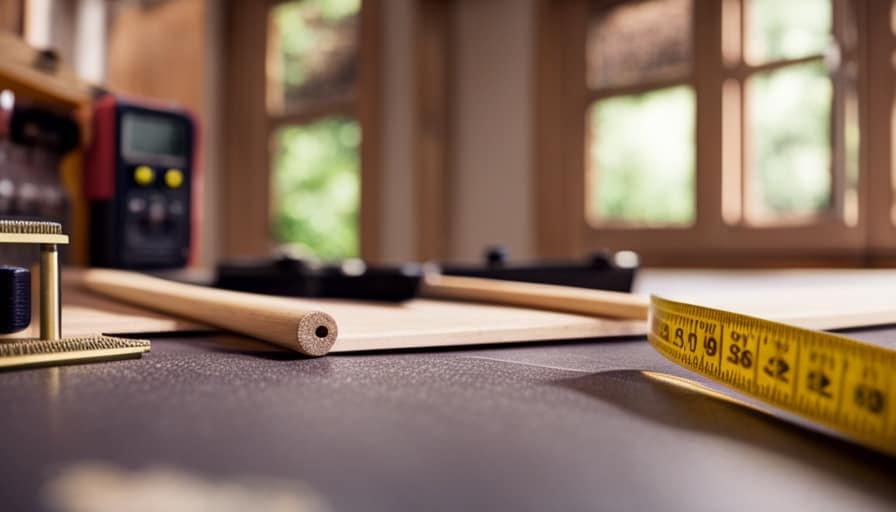
-
Use natural deterrents: Certain scents like peppermint, cinnamon, and vinegar can repel ants. Spray these substances around entry points or wipe down surfaces to discourage ants from entering.
Frequently Asked Questions
How Do I Get Rid of Ants in My Garden?
To get rid of ants in my garden, I use organic pest control methods and natural ant repellents. These methods are effective in keeping ants away and maintaining a healthy garden environment.
Can I Use Vinegar to Kill Ants?
Yes, vinegar can be used to kill ants. However, there are also other natural ant repellents that you can consider using as alternatives to vinegar.
What Should I Do if I Have a Severe Ant Infestation?
If I have a severe ant infestation, I would first focus on prevention tips such as sealing entry points and removing food sources. If the problem persists, I would consider professional ant extermination options for effective and long-lasting results.

Are There Any Health Risks Associated With Ants in the House?
There are potential health risks associated with ants in the house. They can contaminate food, spread bacteria, and even cause allergies. It’s important to take preventive measures to avoid these risks.
Can I Use Essential Oils to Repel Ants?
I find that using essential oils for ant control can be effective. However, it’s important to consider the pros and cons of natural ant repellents. While they are safe and eco-friendly, they may not be as potent as chemical options.
Conclusion
In conclusion, by identifying the type of ants in your house, understanding their behaviors and nesting habits, and implementing natural or chemical remedies, you can effectively get rid of tiny ants.
However, prevention is key to avoiding future infestations. Just as a fortress protects its kingdom from invaders, taking proactive measures will safeguard your home from these pesky pests.
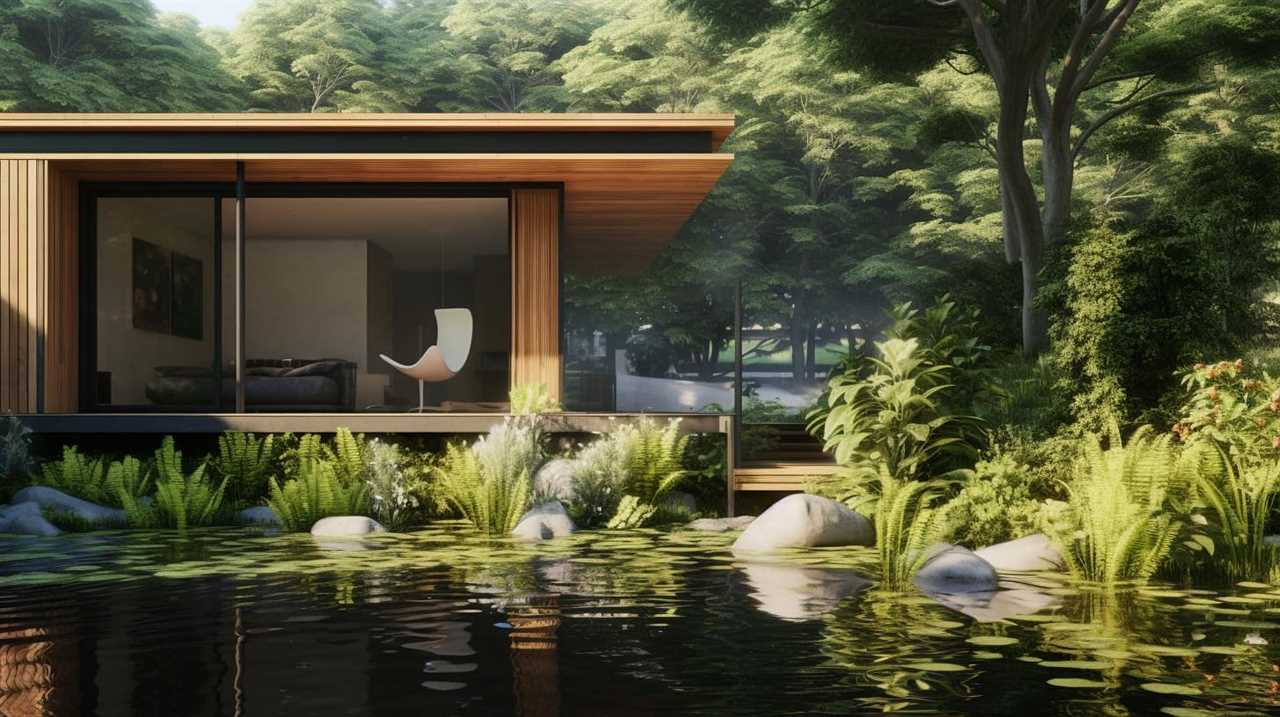
Stay vigilant and maintain cleanliness to ensure a ant-free environment.
I’m Theodore, and I love tiny houses. In fact, I’m the author of Tiny House 43, a book about tiny houses that are also tree houses. I think they’re magical places where imaginations can run wild and adventures are just waiting to happen.
While tree houses are often associated with childhood, they can be the perfect adult retreat. They offer a cozy space to relax and unwind, surrounded by nature. And since they’re typically built on stilts or raised platforms, they offer stunning views that traditional homes simply can’t match.
If you’re looking for a unique and romantic getaway, a tree house tiny house might just be the perfect option.
Beginners Guides
How Cheap Can You Build a Tiny House

Constructing a small house is akin to figuring out a puzzle – it can be difficult, but the payoff is valuable. As someone who enjoys discovering inventive answers, I sympathize with the longing to create a gorgeous home without breaking the bank.
In this article, we’ll explore the factors that affect the cost of building a tiny house and discover budget-friendly materials and labor-saving strategies. Join me on this journey to uncover just how cheap you can build your dream tiny house.
Key Takeaways
- Choosing the right location in a rural area with lower land prices and fewer building restrictions can significantly affect the cost of building a tiny house.
- Using alternative building methods such as reclaimed materials or repurposed items can help reduce costs.
- Implementing cost-saving techniques and building on a budget are important factors in building a cheap tiny house.
- Utilizing budget-friendly building materials, such as affordable insulation options and low-cost flooring alternatives, can also contribute to building a cheap tiny house.
Factors Affecting the Cost of Building a Tiny House
What are the factors that affect the cost of building a tiny house?
When it comes to building a tiny house on a budget, there are several cost-saving techniques and alternative building methods that can significantly impact the overall cost.

One of the main cost-saving techniques is choosing the right location. Building in a rural area with lower land prices and fewer building restrictions can help keep costs down.
Another factor that affects the cost is the size and design of the tiny house. The simpler the design, the more cost-effective it will be.
Additionally, using alternative building methods such as reclaimed materials or repurposed items can also help reduce costs.
By considering these factors and implementing cost-saving techniques, it’s possible to build a tiny house on a budget.
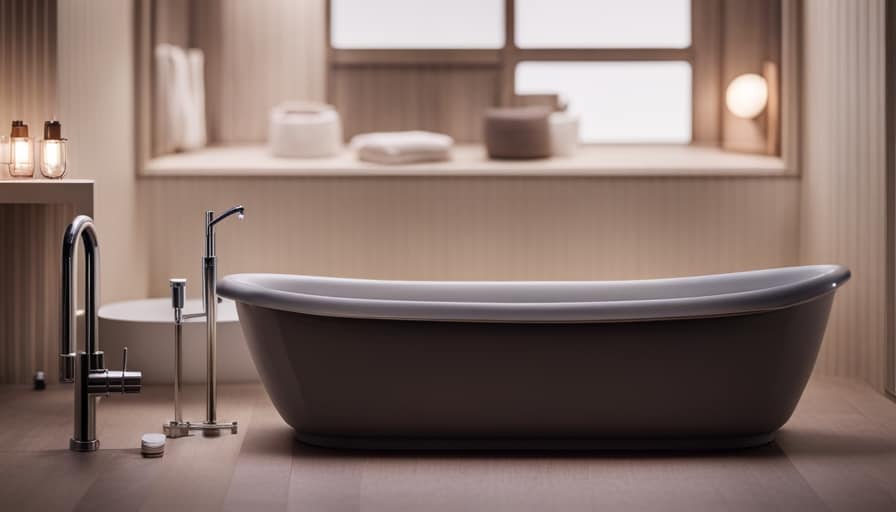
Transitioning into the subsequent section about budget-friendly tiny house building materials, let’s explore how the choice of materials can further impact the overall cost.
Budget-Friendly Tiny House Building Materials
When it comes to building a tiny house on a budget, I can find affordable building materials that will help keep costs down. One area where I can save money is by choosing affordable insulation options. Instead of expensive spray foam insulation, I can opt for alternatives such as fiberglass batts or rigid foam boards. These options are cost-effective and still provide good insulation for the tiny house. Additionally, I can consider low-cost flooring alternatives to save money. Instead of hardwood or tile, I can use vinyl plank flooring or laminate flooring, which are both affordable and durable. By making smart choices when it comes to insulation and flooring, I can build a budget-friendly tiny house without compromising on quality.
| Affordable Insulation Options | Low Cost Flooring Alternatives |
|---|---|
| Fiberglass batts | Vinyl plank flooring |
| Rigid foam boards | Laminate flooring |
Strategies for Saving Money on Tiny House Design
To save money on my tiny house design, I can employ cost-saving strategies such as utilizing multipurpose furniture and maximizing storage space. By incorporating cost-effective design options and implementing DIY tiny house building techniques, I can create a functional and affordable living space.
One key strategy is to choose furniture that serves multiple purposes, such as a sofa that can be converted into a bed or a dining table that can be folded away when not in use. This not only saves money on buying separate pieces of furniture but also maximizes the use of limited space.
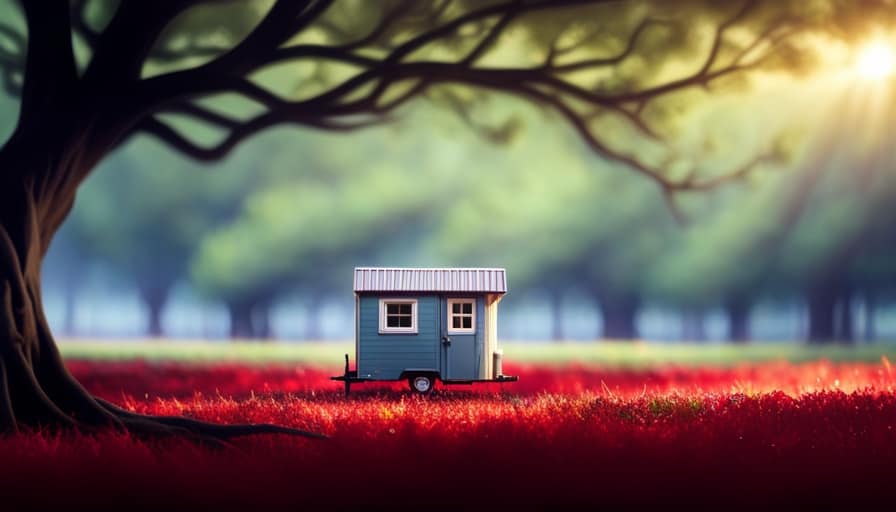
Another cost-saving strategy is to maximize storage space by utilizing built-in shelving, under-bed storage, and wall-mounted organizers. This eliminates the need for additional storage furniture and keeps the space clutter-free.
Creative Ways to Reduce Labor Costs in Tiny House Construction
I can significantly reduce labor costs in tiny house construction by hiring a small team of skilled workers instead of a large crew. This approach allows for effective coordination and streamlined communication, resulting in increased efficiency and reduced labor hours.
Here are some creative ways to further reduce labor costs in tiny house construction:
-
Utilize DIY construction techniques: Encourage the use of DIY construction techniques, where homeowners can actively participate in the building process. This not only reduces labor costs but also creates a sense of ownership and satisfaction.
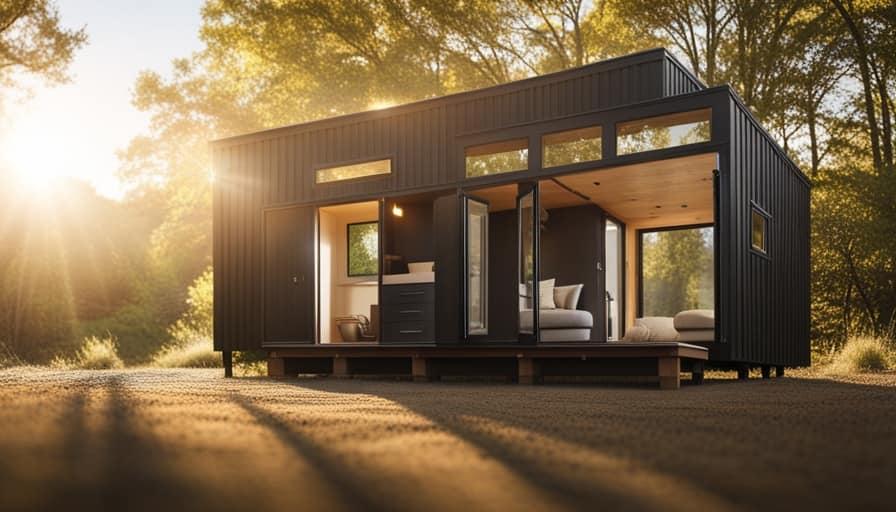
-
Incorporate alternative energy sources: Explore the use of alternative energy sources such as solar panels or wind turbines. By integrating these systems during the construction phase, you can avoid additional labor costs associated with retrofitting.
-
Optimize material usage: Carefully plan and optimize the use of materials to minimize waste. This can be achieved by accurately measuring and cutting materials, as well as repurposing leftover materials for other parts of the project.
-
Prioritize efficient design: Focus on designing a space that maximizes functionality and minimizes unnecessary labor-intensive features. This includes thoughtful space planning, utilizing multipurpose furniture, and incorporating efficient storage solutions.
Implementing these strategies won’t only help reduce labor costs but also contribute to a sustainable and budget-friendly tiny house construction process.
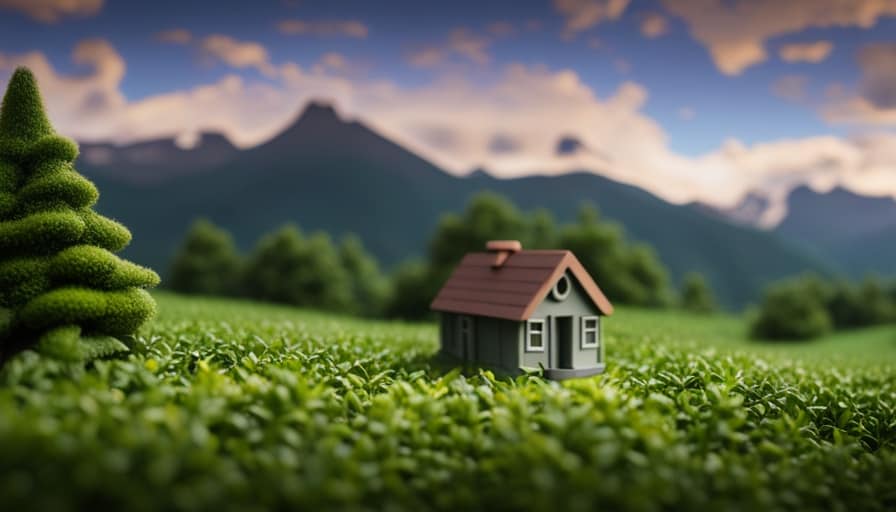
Tips for Finding Affordable Land for Your Tiny House
By researching online listings and networking with local real estate agents, I can easily find affordable land for my tiny house. It is important to explore alternative financing options for purchasing land for a tiny house to keep costs low. One option is owner financing, where the seller acts as the lender and allows you to make monthly payments instead of obtaining a traditional mortgage. Another option is crowdfunding, where you can raise funds from a community of supporters who believe in your tiny house project. Additionally, negotiating with local municipalities for reduced fees and regulations for tiny house living can save you money in the long run. Some municipalities may be open to creating special zoning or permitting regulations for tiny houses, making it easier and more affordable to live in them.
| Financing Options | Benefits |
|---|---|
| Owner Financing | Lower interest rates, flexible payment terms |
| Crowdfunding | Community support, no need for traditional loans |
| Negotiating with Local Municipalities | Reduced fees, simplified regulations |
Finding affordable land for your tiny house is a crucial step in building your dream home while staying within your budget. With the right research, networking, and negotiation skills, you can make your tiny house dreams a reality.
Frequently Asked Questions
What Are the Most Common Mistakes to Avoid When Building a Tiny House on a Tight Budget?
Common pitfalls to avoid when building a tiny house on a tight budget include overestimating DIY skills, not researching local codes and regulations, and not budgeting for unexpected expenses. Cost saving tips include using reclaimed materials and prioritizing essential features.
Are There Any Financing Options Available for Building a Tiny House?
Financing options for building a tiny house include personal loans, RV loans, and construction loans. Pros include flexibility, ownership, and the opportunity to live mortgage-free. Cons may include higher interest rates and stricter qualification requirements.
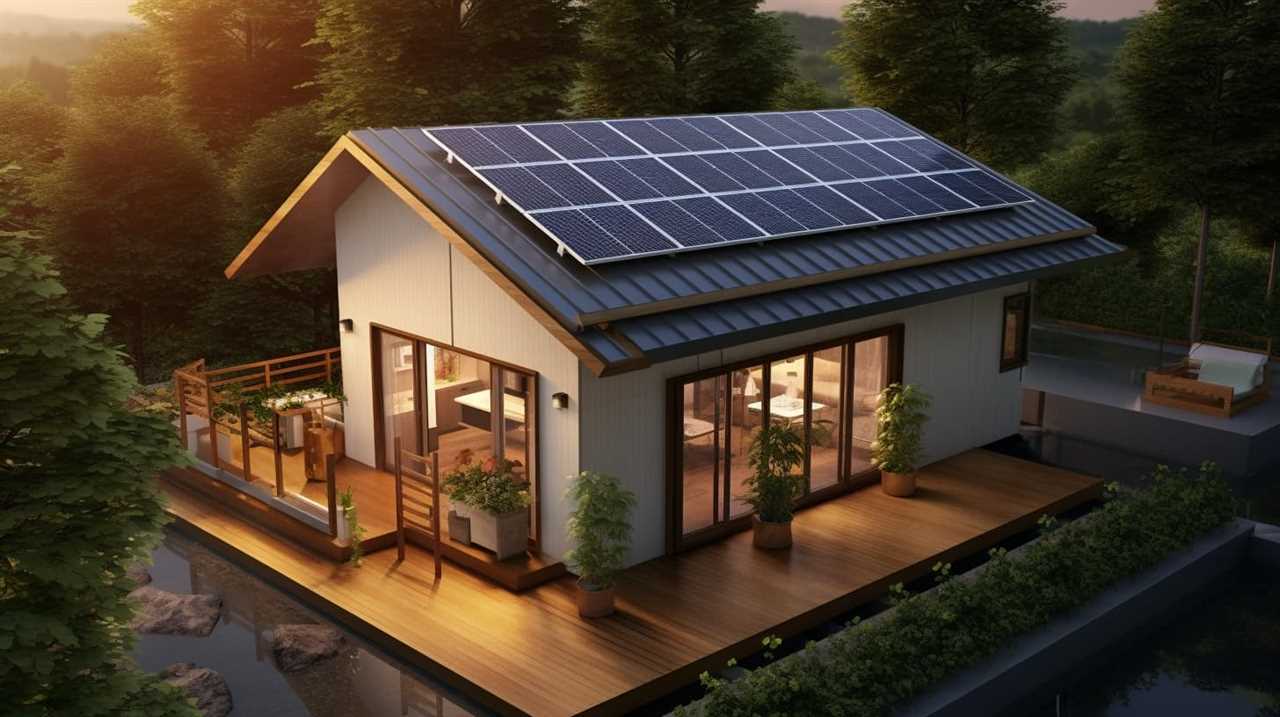
How Much Does It Cost to Maintain a Tiny House on a Yearly Basis?
Maintaining a tiny house on a yearly basis can be cost-effective. By embracing the benefits of living in a tiny house vs. a traditional home and following tips for minimizing maintenance costs, I can save money and enjoy a simpler lifestyle.
Can You Build a Tiny House Using Recycled or Salvaged Materials?
Using recycled and salvaged materials for a tiny house not only saves money, but also gives a sense of purpose and accomplishment. It’s a creative way to build sustainably and reduce waste while creating a unique and personalized home.
Are There Any Legal Restrictions or Regulations to Consider When Finding Land for a Tiny House?
When finding land for a tiny house, it’s important to consider legal restrictions and zoning regulations. Land requirements vary, and financing options may be limited. Maintenance costs can be lower, and eco-friendly building materials are often used.
Conclusion
In conclusion, building a tiny house can be an affordable and cost-effective option for those looking to downsize or live a more minimalist lifestyle. By considering factors such as materials, design strategies, and labor costs, it’s possible to build a tiny house on a tight budget.

With a little creativity and resourcefulness, you can achieve your dream of owning a tiny house without breaking the bank. So why wait? Start planning and building your own tiny house today!
I’m Theodore, and I love tiny houses. In fact, I’m the author of Tiny House 43, a book about tiny houses that are also tree houses. I think they’re magical places where imaginations can run wild and adventures are just waiting to happen.
While tree houses are often associated with childhood, they can be the perfect adult retreat. They offer a cozy space to relax and unwind, surrounded by nature. And since they’re typically built on stilts or raised platforms, they offer stunning views that traditional homes simply can’t match.
If you’re looking for a unique and romantic getaway, a tree house tiny house might just be the perfect option.
-

 Beginners Guides2 weeks ago
Beginners Guides2 weeks agoHow To Buy A Tesla Tiny House
-

 Energy Efficiency2 months ago
Energy Efficiency2 months agoBest Tiny Homes For Cold Climates
-

 Beginners Guides2 weeks ago
Beginners Guides2 weeks agoTiny House Nation Where Are They Now Stephanie
-

 Tiny House Resources (e.g., legalities, cost, insurance, FAQs)2 months ago
Tiny House Resources (e.g., legalities, cost, insurance, FAQs)2 months agoDo Tiny Homes Need Planning Permission?
-

 Beginners Guides3 weeks ago
Beginners Guides3 weeks agoFrom The Show Tiny House Nation How Many Keep Their Tiny House?
-

 Beginners Guides2 months ago
Beginners Guides2 months agoUsing a Climbing Net For Treehouse Construction
-

 Beginners Guides2 months ago
Beginners Guides2 months agoHow to Build a Treehouse Without Drilling Into the Tree
-

 Beginners Guides3 weeks ago
Beginners Guides3 weeks agoTiny House Nation Who Pays For The Houses






